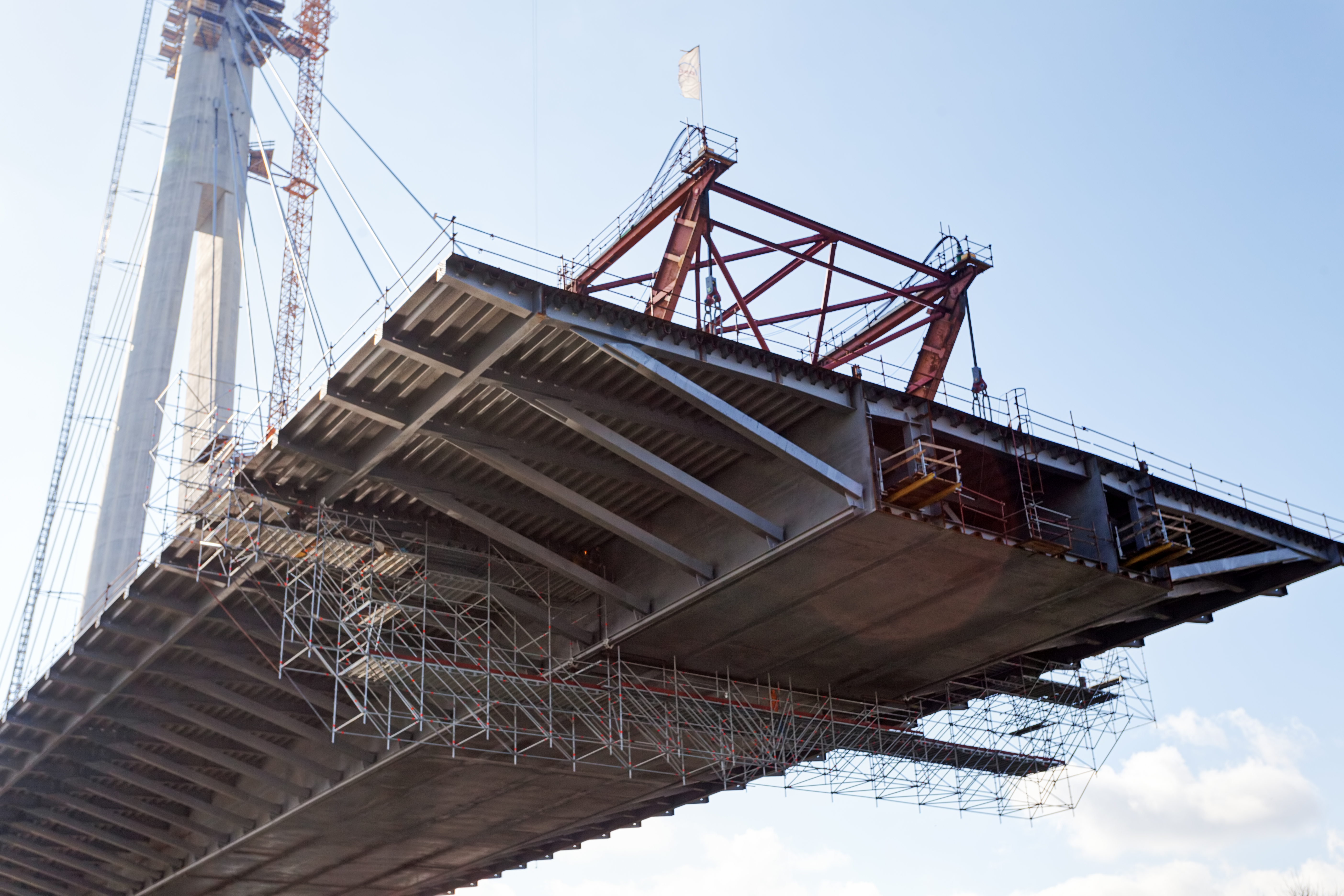Constructive on equipment rental

Source: White House, 17 October 2024. Private sector investment data has been sourced from public press releases, industry associations and news articles. Public sector investments represent announced funding and allocations from the Bipartisan Infrastructure Law, CHIPS and Science Act, and the Inflation Reduction Act. All announcement data is preliminary and may be non-binding. Awards may be contingent on meeting certain requirements.
* Figure does not include the clean energy tax incentives from the Inflation Reduction Act.
Ground is being broken across the US on a flurry of major projects from upgraded highways to semiconductor fabrication plants. Non-residential construction spending rose by 45% in the three years to September 2024.1
We expect an extensive pipeline of private and public investment in ‘new economy’ industries and infrastructure, supported by the onshoring trend, to sustain strong medium-term demand for equipment rental services that supply the US construction industry.
Since 2021, private companies have committed almost US$1tn in manufacturing investments, including but not limited to semiconductors, electric vehicles (EVs) and batteries, and clean energy equipment. The US government meanwhile announced US$630bn to upgrade transport and water infrastructure, accelerate the roll-out of clean energy and improve climate resilience.
Equipment rental services are particularly well suited to supporting major projects that require considerable concentrations of plant equipment, typically for a limited span of time, in three ways. First, renting (versus owning) equipment offers construction firms flexible and affordable access to the latest, most efficient and specialised technologies. Second, it ensures compliance with safety and environmental regulations. Third, shifting costs from capital expenditure to operational expenditure can also confer cash flow and tax advantages.
Equipment rental can also contribute to lowering the environmental impact of construction, which accounts for roughly 10% of global energy-related greenhouse gas (GHG) emissions.2 By maximising operational efficiencies and the utility of capital and resource-intensive assets, efficient rental models have the potential to materially reduce the lifecycle GHG emissions of industrial equipment versus private ownership.
UK-listed Ashtead, which operates under the Sunbelt brand, is the second-largest equipment rental company in the US with an 11% market share.3 Around one-in-10 of its US fleet are working on megaprojects, which Ashtead says have made up roughly 30% of recent US projects by value.4
Private and public investments in ‘new economy’ manufacturing and infrastructure have been spurred by signature policies of the outgoing Biden administration: namely the Inflation Reduction Act, the Infrastructure Investment and Jobs Act, and the CHIPS and Science Act. Under the incoming Trump administration, we do anticipate executive and legislative action that curtails federal spending in support of renewables and EVs. We do not, however, expect the wholesale repeal of existing laws given their broad-based support in Republican-held states.
Indeed, we expect a push for domestic manufacturing under Trump to lead to a continuation of onshoring trends, especially in critical industries like chipmaking. Meanwhile the need to renew ageing infrastructure is recognised across the political spectrum. America’s bridges, for example, are on average 44 years old and one-in-13 are deemed “structurally deficient”.5
Combined, we believe that these long-term drivers of investment will sustain demand tailwinds for leaders in US equipment rental this decade.
1 Federal Reserve Bank of St. Louis, November 2024: Total Construction Spending: Nonresidential in the United States
2 UN Environment Programme / Global Alliance for Buildings and Construction, 2020: Global Status Report for Buildings and Construction
3 Ashtead, 2024: Annual Report
4 Ashtead, 2024: Annual Report
5 American Society of Civil Engineers, 2021: Report Card for America’s Infrastructure
References to specific securities are for illustrative purposes only and should not be considered as a recommendation to buy or sell. Nothing presented herein is intended to constitute investment advice and no investment decision should be made solely based on this information. Nothing presented should be construed as a recommendation to purchase or sell a particular type of security or follow any investment technique or strategy. Information presented herein reflects Impax Asset Management’s views at a particular time. Such views are subject to change at any point and Impax Asset Management shall not be obligated to provide any notice. Any forward-looking statements or forecasts are based on assumptions and actual results are expected to vary. While Impax Asset Management has used reasonable efforts to obtain information from reliable sources, we make no representations or warranties as to the accuracy, reliability or completeness of third-party information presented herein. No guarantee of investment performance is being provided and no inference to the contrary should be made.
